| [show]Florida State symbols |
|---|
Florida  i/ˈflɒrɪdə/ is a state in the southeastern region of the United States, bordered to the west by the Gulf of Mexico, to the north by Alabama and Georgia, to the east by the Atlantic Ocean, and to the south by the Straits of Florida. Florida is the 22nd most extensive, the 4th most populous, and the 8th most densely populated of the 50 United States. The state capital is Tallahassee, the largest city is Jacksonville, and the largest metropolitan area is the Miami metropolitan area.
i/ˈflɒrɪdə/ is a state in the southeastern region of the United States, bordered to the west by the Gulf of Mexico, to the north by Alabama and Georgia, to the east by the Atlantic Ocean, and to the south by the Straits of Florida. Florida is the 22nd most extensive, the 4th most populous, and the 8th most densely populated of the 50 United States. The state capital is Tallahassee, the largest city is Jacksonville, and the largest metropolitan area is the Miami metropolitan area.
Much of Florida is a peninsula between the Gulf of Mexico, the Atlantic Ocean, and the Straits of Florida. Its geography is notable for a coastline, omnipresent water and the threat of hurricanes. Florida has the longest coastline in the contiguous United States, encompassing approximately 1,350 miles (2,170 km), and is the only state that borders both the Gulf of Mexico and the Atlantic Ocean. Much of the state is at or near sea level and is characterized by sedimentary soil. The climate varies from subtropical in the north to tropical in the south.[7] Some of its most iconic animals, such as the American alligator, crocodile, Florida panther and themanatee, can be found in the Everglades National Park.
Since the first European contact was made in 1513 by Spanish explorer Juan Ponce de León – who named it La Florida ([la floˈɾiða]"Flowery Land") upon landing there during the Easter season, Pascua Florida[8] – Florida was a challenge for the European colonial powers before it gained statehood in the United States in 1845. It was a principal location of the Seminole Wars against the Indians, and racial segregation after the American Civil War. Today, it is distinguished by its large Hispanic community and high population growth, as well as its increasing environmental concerns. Its economy relies mainly on tourism, agriculture, and transportation, which developed in the late 19th century. Florida is also known for its amusement parks, the production of oranges, and the Kennedy Space Center.
Florida culture is a reflection of influences and multiple inheritance; Native American, European American, Hispanic and African American heritages can be found in the architecture and cuisine. Florida has attracted many writers such as Marjorie Kinnan Rawlings, Ernest Hemingway and Tennessee Williams, and continues to attract celebrities and athletes. It is internationally known for golf, tennis, auto racing, and water sports.
Contents
[hide]History
Main article: History of Florida
See also: Seminole Wars
Archaeological research indicates that Florida was first inhabited by Paleo-Indians, the first human inhabitants of the Americas, perhaps as early as 14 thousand years ago. The region was continuously inhabited through the Archaic period (to about 2000 BC). After about 500 BC the previously relatively uniform Archaic culture began to coalesce into distinctive local cultures.[9]
By the 16th century, the earliest time for which there is a historical record, major Native American groups included the Apalachee (of the Florida Panhandle), the Timucua (of northern and central Florida), the Ais (of the central Atlantic coast), the Tocobaga (of the Tampa Bay area), theCalusa (of southwest Florida) and the Tequesta (of the southeastern coast).
European arrival (1513)
Florida was the first part of what is now the continental United States to be visited by Europeans. The earliest known European explorers came with the Spanish conquistador Juan Ponce de León. According to the "500TH Florida Discovery Council Round Table", on March 3, 1513, Ponce de Leon, organized and equipped three ships which began an expedition (with a crew of 200, including women and free blacks), departing from Punta Aguada Puerto Rico. Puerto Rico was the historic first gateway to the discovery of Florida, which opened the doors to the advanced settlement of the U.S. They introduced Christianity, cattle, horses, sheep, the Spanish language and more to Florida.[11][broken citation]
Ponce de León spotted the peninsula on April 2, 1513. According to his chroniclers, he named the region La Florida ("flowery land") because it was then the Easter Season, known in Spanish as Pascua Florida (roughly "Flowery Easter"), and because the vegetation was in bloom.[12] Juan Ponce de León may not have been the first European to reach Florida, however; reportedly, at least one indigenous tribesman whom he encountered in Florida in 1513 spoke Spanish.[13] From 1513 onward, the land became known as La Florida. After 1630, and throughout the 18th century, Tegesta (after the Tequesta tribe) was an alternate name of choice for the Florida peninsula following publication of a map by the Dutch cartographer Hessel Gerritsz in Joannes de Laet's History of the New World.[14][15][16]
The horse, which the natives had eaten into extinction 10,000 years ago,[17] was reintroduced into North America with the European explorers and into Florida in 1538.[18] As the animals were lost or stolen, they began to become feral.
Over the following century, both the Spanish and French established settlements in Florida with varying degrees of success. In 1559, DonTristán de Luna y Arellano established a colony at present-day Pensacola, one of the first European attempts at settlement in the continental United States. It was abandoned by 1561 due to hurricanes, famine, and warring tribes, and the area was not re-inhabited until the 1690s.
French Protestant Huguenots founded Fort Caroline in modern-day Jacksonville in 1564. The following year, the Spanish colony of St. Augustine (San Agustín) was established, and forces from there conquered Fort Caroline that same year. The Spanish maintained tenuous control over the region by converting the local tribes, briefly with Jesuits and later with Franciscan friars.
The area of Spanish Florida diminished with the establishment of English colonies to the north and French colonies to the west. The English weakened Spanish power in the area by supplying their Creek and Yamasee allies with firearms and urging them to raid the Timucuan and Apalachee client-tribes of the Spanish. The English attacked St. Augustine, burning the city and its cathedral to the ground several times, while the citizens hid behind the walls of the Castillo de San Marcos.
Florida attracted numerous Africans and African Americans from the southern British colonies in North America who sought freedom from slavery. Once in Florida, the Spanish Crown converted them to Roman Catholicism and gave them freedom. Those freedmen settled in a community north of St. Augustine, called Gracia Real de Santa Teresa de Mose, the first free black settlement of its kind in what became the United States. Many of those slaves were also welcomed by Creek and Seminole Native Americans, who had established settlements in the region at the invitation of the Spanish government.
Great Britain gained control of Florida and other territory diplomatically in 1763 through the Peace of Paris following its defeat of France in the Seven Years' War, and exchanges with Spain of possessions. The British divided their new acquisitions into East Florida, with its capital at St. Augustine, and West Florida, with its capital at Pensacola.
Britain tried to develop the Floridas through the importation of immigrants for labor, but this project ultimately failed. Of the original seventeen British colonies, East Florida and West Florida were two of the four colonies that did not send any representatives to Philadelphia to draft the Declaration of Independence (Upper Canada and Lower Canada were the two other colonies that did not send representatives.)[19] Spain received both Floridas after Britain's defeat by the American colonies and the subsequent Treaty of Versailles in 1783, continuing the division into East and West Florida. They offered land grants to anyone who settled in the colonies, and many Americans moved to them.
After settler attacks on Indian towns, Seminole Indians based in East Florida began raiding Georgia settlements, purportedly at the behest of the Spanish. The United States Armyled increasingly frequent incursions into Spanish territory, including the 1817–1818 campaign against the Seminole Indians by Andrew Jackson that became known as the First Seminole War. Following the war, the United States effectively controlled East Florida.
Spain cedes Florida to the United States (1819)
In 1819, by terms of the Adams-Onís Treaty, Spain ceded Florida to the United States in exchange for $5 million and the American renunciation of any claims on Texas that they might have from the Louisiana Purchase. The free blacks and Indian slaves, Black Seminoles, living near St. Augustine, fled to Havana, Cuba to avoid coming under US control. Some Seminole also abandoned their settlements and moved further south.[20] Hundreds of Black Seminoles and fugitive slaves escaped in the early nineteenth century fromCape Florida to The Bahamas, where they settled on Andros Island.[21]
In 1830, the Indian Removal Act was passed and as settlement increased, pressure grew on the United States government to remove the Indians from their lands in Florida. To the chagrin of Georgia landowners, the Seminoles harbored and integrated runaway blacks, known as the Black Seminoles, and clashes between whites and Indians grew with the influx of new settlers. In 1832, the United States government signed the Treaty of Payne's Landing with some of the Seminole chiefs, promising them lands west of the Mississippi River if they agreed to leave Florida voluntarily. Many of the Seminoles left at this time, while those who remained prepared to defend their claims to the land. The U.S. Army arrived in 1835 to enforce the treaty under pressure from white settlers, and the Second Seminole War began at the end of the year with the Dade Massacre, when Seminoles ambushed and killed or mortally wounded all but one in a group of 110 Army troops, plus Major Dade and seven officers, marching from Fort Brooke (Tampa) to reinforce Fort King (Ocala).[22]
Between 900 and 1,500 Seminole Indian warriors employed guerrilla tactics against United States Army troops for seven years until 1842. The U.S. government is estimated to have spent between $20 million and $40 million on the war, at the time an astronomical sum. A total of approximately 3,000 Seminole and 800 Black Seminole were removed to Indian Territory; the US finally gave up its fight against the few hundred Seminole in Florida, who were deep in the Everglades and impossible to defeat or dislodge.
On March 3, 1845, Florida became the 27th state of the United States of America, as a slave state, although initially its population grew slowly. White settlers continued to encroach on lands used by the Seminoles, and the United States government resolved to make another effort to move the remaining Seminoles to the West. The Third Seminole War lasted from 1855 to 1858, and resulted in the removal of most of the remaining Seminoles. Even after three bloody wars, the U.S. Army failed to force all of the Seminole Indians in Florida to the West.[23] Though most of the Seminoles were forcibly exiled to Creek lands west of the Mississippi, hundreds, including Seminole leader Aripeka (Sam Jones), remained in the Everglades and refused to leave. Their descendants remain there to this day and two tribes in Florida are federally recognized.
White settlers began to establish cotton plantations in Florida, which required numerous laborers, which they supplied by buying slaves in the domestic market. In the development of the Deep South, nearly one million African Americans were forced to move to the region through slavery. By 1860 Florida had only 140,424 people, of whom 44% were enslaved. There were fewer than 1000 free African Americans before the Civil War.[24]
American Civil War
Further information: Florida in the American Civil War
On January 10, 1861, before the start of the American Civil War, Florida declared its secession from the Union; ten days later, the state became a founding member of the Confederate States of America. Nonetheless, Confederate authorities expected little in the way of help from Florida and offered it even less. The 15,000 men it eventually offered up for service were generally sent elsewhere and before long, Northern papers referred to the state as "the smallest tadpole in the dirty pool of secession." The largest engagements in the state were the battle of Olustee on February 20, 1864 and the battle of Natural Bridge, just south of Tallahassee, on March 6, 1865. Both were Confederate victories.[25] The war ended in 1865. On June 25, 1868, Florida's congressional representation was restored.
After Reconstruction, white Democrats succeeded in regaining power in the state legislature in the 1870s. In 1885 they created a new constitution, followed by statutes through 1889 that effectively disfranchised most blacks and many poor whites over the next several years. Provisions included poll taxes, literacy tests, and residency requirements. Disfranchisement for most African Americans in the state persisted until the Civil Rights Movement of the 1960s gained federal legislation in 1965 to enforce protection of their constitutional suffrage.
20th century
Until the mid-20th century, Florida was the least populous Southern state. In 1900 its population was only 528,542, of whom nearly 44% were African American.[26] The boll weevil devastated cotton crops, and early 20th-century lynchings and racial violence caused a record number of African Americans to leave the state in the Great Migration to northern and midwestern industrial cities. Forty thousand blacks, roughly one-fifth of their 1900 population, left for better opportunities.[27]
Historically, Florida's economy was based upon agricultural products such as cattle farming, sugarcane, citrus, tomatoes, and strawberries.
Economic prosperity in the 1920s stimulated tourism to Florida and related development of hotels and resort communities. Combined with its sudden elevation in profile was the Florida land boom of the 1920s, which brought a brief period of intense land development. Devastating hurricanes in 1926 and 1928, followed by the stock market crash and Great Depression, brought that period to a halt.
Florida's economy did not fully recover until the military buildup for World War II.
The climate, tempered by the growing availability of air conditioning, and low cost of living made the state a haven. Migration from the Rust Belt and the Northeast sharply increased the population after the war. In recent decades, more migrants have come for the jobs in a developing economy. With a population of more than 18 million according to the 2010 census, Florida is the most populous state in the Southeastern United States, the second most populous state in the South behind Texas, and the fourth most populous in the United States.
Geography
Main article: Geography of Florida
See also: List of counties in Florida and List of Florida state parks
Much of the state of Florida is situated on a peninsula between the Gulf of Mexico, the Atlantic Ocean and the Straits of Florida. Spanning two time zones, it extends to the northwest into a panhandle, extending along the northern Gulf of Mexico. It is bordered on the north by the states of Georgia andAlabama, and on the west, at the end of the panhandle, by Alabama. It is near several Caribbean countries, particularly The Bahamas and Cuba. Florida is one of the largest states east of theMississippi River, and only Alaska and Michigan are larger in water area.
At 345 feet (105 m) above mean sea level, Britton Hill is the highest point in Florida and the lowest highpoint of any U.S. state.[28] Much of the state south of Orlando is low-lying and fairly level; much of Florida has an elevation of less than 12 feet (less than 3.7 meters), including many populated areas such as Miami which are located on the coast. Miami and other parts of south Florida are the most vulnerable regions in the world to rising sea levels associated with global warming.[29]
However some places such as Clearwater feature vistas that rise 50 to 100 ft (15 to 30 m) above the water. Much of Central and North Florida, typically 25 mi (40 km) or more away from the coastline, features rolling hills with elevations ranging from 100 to 250 ft (30 to 76 m). The highest point in peninsular Florida (east and south of the Suwanee River), Sugarloaf Mountain, is a 312-foot (95 m) peak in Lake County.[30]
Boundaries
The state line begins in the Atlantic Ocean, traveling west, south, and north up the thalweg of theSaint Mary's River. At the origin of that river, it then follows a straight line nearly due west and slightly north, to the point where the confluence of the Flint River (from Georgia) and the Chattahoochee River (down the Alabama/Georgia line) used to form Florida's Apalachicola River. (Since Woodruff Dam was built, this point has been under Lake Seminole.)
The border with Georgia continues north through the lake for a short distance up the former thalweg of the Chattahoochee, then with Alabama runs due west along latitude 31°Nto the Perdido River, then south along its thalweg to the Gulf via Perdido Bay. The water boundary is 3 nautical miles (3.5 mi; 5.6 km) offshore in the Atlantic Ocean[31] and 9 nautical miles (10 mi; 17 km) offshore in the Gulf of Mexico.[31] Much of the state is at or near sea level.
Climate
Main article: Climate of Florida
See also: List of Florida hurricanes and U.S. state temperature extremes
The climate of Florida is tempered somewhat by the fact that no part of the state is very distant from the ocean. North of Lake Okeechobee, the prevalent climate is humid subtropical (Köppen: Cfa), while coastal areas south of the lake (including the Florida Keys) have a true tropical climate (Köppen: Aw).[32] Mean high temperatures for late July are primarily in the low 90s Fahrenheit (32–34 °C). Mean low temperatures for early to mid January range from the low 40s Fahrenheit (4–7 °C) in northern Florida to above 60 °F (16 °C) from Miami on southward. With an average daily temperature of 70.7 °F (21.5 °C), it is the warmest state in the country.[33]
In the summer, high temperatures in the state seldom exceed 100 °F (38 °C). Several record cold maxima have been in the 30s °F (−1 to 4 °C) and record lows have been in the 10s (−12 to −7 °C). These temperatures normally extend at most a few days at a time in the northern and central parts of Florida. Southern Florida, however, rarely encounters freezing temperatures.
The hottest temperature ever recorded in Florida was 109 °F (43 °C), which was set on June 29, 1931 in Monticello. The coldest temperature was −2 °F (−19 °C), on February 13, 1899, just 25 miles (40 km) away, in Tallahassee.
Due to its subtropical climate, Florida rarely receives snow. However, on very rare occasions, a combination of cold moisture and freezing temperatures can result in snowfall. Frost is more common than snow, occurring several times during the winter months.
The USDA Plant hardiness zones for the state range from zone 8a (no colder than 10 °F or −12 °C) in the inland western panhandle to zone 11b (no colder than 45 °F or 7 °C) in the lower Florida Keys.[34]
Florida's nickname is the "Sunshine State", but severe weather is a common occurrence in the state. Central Florida is known as thelightning capital of the United States, as it experiences more lightning strikes than anywhere else in the country. [35] Florida has one of the highest average precipitation levels of any state,[36] in large part because afternoon thunderstorms are common in much of the state from late spring until early autumn. A narrow eastern part of the state including Orlando and Jacksonville receives between 2,400 and 2,800 hours of sunshine annually. The rest of the state, including Miami, receives between 2,800 and 3,200 hours annually.[37]
Florida leads the United States in tornadoes per area (when including waterspouts)[38] but they do not typically reach the intensity of those in the Midwest and Great Plains. Hail often accompanies the most severe thunderstorms.
Hurricanes pose a severe threat during hurricane season, which lasts from June 1 to November 30, although some storms have been known to form out of season. Florida is the most hurricane-prone state, with subtropical or tropical water on a lengthy coastline. From 1851 to 2006, Florida has been struck by 114 hurricanes, 37 of them major—category 3 and above.[39] It is rare for a hurricane season to pass without any impact in the state by at least a tropical storm. For category 4 or higher storms which have struck the United States, 83% have either hit Florida or Texas.[39] August to October is the most likely period for a hurricane in Florida.
In 2004, Florida was hit by a record four hurricanes. Hurricanes Charley (August 13), Frances (September 4–5), Ivan (September 16), and Jeanne (September 25–26) cumulatively cost the state's economy $42 billion. Additionally, the four storms caused an estimated $45 billion in damage. [40] In 2005, Hurricane Dennis (July 10) became the fifth storm to strike Florida within eleven months. Later, Hurricane Katrina (August 25) passed through South Florida and Hurricane Rita (September 20) swept through the Florida Keys. Hurricane Wilma (October 24) made landfall near Cape Romano, just south of Marco Island, finishing another very active hurricane season. Wilma is the second most expensive hurricane in Florida history, due in part to a five-year window in which to file claims.[41]
Florida was the site of what was then the costliest weather disaster in U.S. history, Hurricane Andrew, which caused more than $25 billion in damage when it struck on August 24, 1992; it held that distinction until 2005, when Hurricane Katrina surpassed it. Among a long list of other infamous hurricane strikes are the 1926 Miami hurricane, the 1928 Okeechobee hurricane, the Labor Day Hurricane of 1935, Hurricane Donna in 1960, and Hurricane Opal in 1995. Recent research suggests the number of storms are part of a natural cycle which rises in some years, falls in others.[42][43]
| Average High and Low temperatures for various Florida Cities | ||||||||||||
| City | Jan | Feb | Mar | Apr | May | Jun | Jul | Aug | Sep | Oct | Nov | Dec |
| Jacksonville[44] | 65/42 | 68/45 | 74/50 | 79/55 | 86/63 | 90/70 | 92/73 | 91/73 | 87/69 | 80/61 | 74/51 | 67/44 |
| Key West[45] | 75/65 | 76/66 | 79/69 | 82/72 | 85/76 | 88/78 | 89/80 | 90/80 | 88/78 | 85/76 | 80/71 | 76/67 |
| Melbourne[46] | 72/51 | 73/53 | 77/57 | 81/61 | 85/67 | 88/71 | 90/73 | 90/73 | 88/72 | 83/67 | 78/60 | 73/53 |
| Miami[47] | 76/60 | 78/62 | 80/65 | 83/68 | 87/73 | 89/76 | 91/77 | 91/77 | 89/76 | 86/73 | 82/68 | 78/63 |
| Orlando[46] | 71/49 | 74/52 | 78/56 | 83/60 | 88/66 | 91/72 | 92/74 | 92/74 | 90/73 | 85/66 | 78/59 | 73/52 |
| Pensacola[48] | 61/43 | 64/46 | 70/51 | 76/58 | 84/66 | 89/72 | 90/74 | 90/74 | 87/70 | 80/60 | 70/50 | 63/45 |
| Tallahassee[49] | 64/39 | 68/42 | 74/47 | 80/52 | 87/62 | 91/70 | 92/72 | 92/72 | 89/68 | 82/57 | 73/48 | 66/41 |
| Tampa[50] | 70/51 | 73/54 | 77/58 | 81/62 | 88/69 | 90/74 | 90/75 | 91/76 | 89/74 | 85/67 | 78/60 | 72/54 |
Fauna
Further information: List of mammals of Florida and Snakes of Florida
Florida is host to many types of wildlife including:
- Marine Mammals: Bottlenose Dolphin, Short-finned Pilot Whale, North Atlantic Right Whale, West Indian Manatee
- Mammals: Florida panther, Northern River Otter, Mink, Eastern Cottontail Rabbit, Marsh Rabbit, Raccoon, Striped Skunk, Squirrel,White-tailed deer, Key Deer, Bobcats, Gray Fox, Coyote, Wild Boar, Florida Black Bear, Nine-banded Armadillos, Virginia Opossum
- Reptiles: Eastern Diamondback and Pygmy Rattlesnakes, Gopher Tortoise, Green and Leatherback Sea Turtles, and Eastern Indigo Snake. In 2012, there were about one million American Alligators and 1,500 Crocodiles.[51]
- Birds: peregrine falcon,[52] Bald Eagle, Northern Caracara, Snail Kite, Osprey, White and Brown Pelicans, Sea Gulls, Whoopingand Sandhill Cranes, Roseate Spoonbill, Florida Scrub Jay (state endemic), and others. One subspecies of Wild Turkey, Meleagris gallopavo, namely subspecies osceola, is found only in the state of Florida.[53] The state is a wintering location for many species of eastern North American birds.
- As a result of climate change, there have been small numbers of several new species normally native to cooler areas to the north: snowy owls, snow buntings, Harlequin ducks, and razorbills. These have been seen in the northern part of the state.[54]
- Invertebrates: carpenter ants, termites, American cockroach, Africanized bees, the Miami blue butterfly, and the grizzled mantis.
The only known calving area for the Northern Right Whale is off the coasts of Florida and Georgia.[55]
The native bear population has risen from a historic low of 300 in the 1970s, to 3,000 in 2011.[56]
Since their accidental importation from South America into North America in the 1930s, the Red imported fire ant population has increased its territorial range to include most of the Southern United States, including Florida. They are more aggressive than most native ant species and have a painful sting.[57]
A number of non-native snakes and lizards have been released in the wild. In 2010 the state created a hunting season for Burmese and Indian pythons, African rock pythons,green anacondas, and Nile monitor lizards.[58] Green iguanas have also established a firm population in the southern part of the state.
There are about 500,000 feral pigs in Florida.[59]
Flora
There are about 3,000 different types of wildflowers in Florida. This is the third most diverse state in the union, behind California and Texas, both larger states.[60]
On the east coast of the state, mangroves have normally dominated the coast from Cocoa Beach southward; salt marshes from St. Augustine northward. From St. Augustine south to Cocoa Beach, the coast fluctuates between the two, depending on the annual weather conditions.[54]
Environmental issues
Main article: Environment of Florida
Florida is a low per capita energy user.[61] It is estimated that approximately 4% of energy in the state is generated through renewable resources.[62] Florida's energy production is 6% of the nation's total energy output, while total production of pollutants is lower, with figures of 5.6% for nitrogen oxide, 5.1% for carbon dioxide, and 3.5% for sulfur dioxide.[62]
It is believed that significant petroleum resources are located off Florida's western coast in the Gulf of Mexico, but that region has been closed to exploration since 1981.[63]
Red tide has been an issue on the southwest coast of Florida, as well as other areas. While there has been a great deal of conjecture over the cause of the toxic algae bloom, there is no evidence that it is being caused by pollution or that there has been an increase in the duration or frequency of red tides.[64]
The Florida panther is close to extinction. A record 23 were killed in 2009 predominately by automobile collisions, leaving about 100 individuals in the wild. The Center for Biological Diversity and others have therefore called for a special protected area for the panther to be established.[65] Manatees are also dying at a rate higher than their reproduction.
Prior to instituting controlled burns, the state forests and pastures burned for months during the dry season. From the 1940s to the 1970s, the state and federal government assumed control of burning that largely prevented uncontrolled fires.[66] In 2010, the state burned a record 2,600,000 acres (11,000 km2).[67]
The Atlantic beaches that are vital to the state's economy are being washed out to sea due to rising sea levels caused by climate change and the state is running out of accessible offshore sand reserves.[68]
Recycling
The recycling rate in Florida is estimated at 28% in 2000.[69] In 2008, The Energy, Climate Change, and Economic Security Act of 2008 set a goal of progressively improving recycling to reach a 75 percent rate by the year 2020.
It directs public entities (schools, state and local public agencies) to report the amount they recycle annually to their counties. Private businesses are encouraged (but not mandated) to report the amount they recycle to their counties. Finally, the section directs DEP to create the Recycling Business Assistance Center.[70] Under the new law, each county must implement a recyclable materials recycling program that shall have a goal of recycling recyclable solid waste by 40 percent by December 31, 2012, 50 percent by 2014, 60 percent by 2016, 70 percent by 2018, and 75 percent by 2020.[71] The county with the highest recycling rate is Lee County with a 43% recycling rate as of 2008.[72]
Geology
Main article: Geology of Florida
The Florida peninsula is a porous plateau of karst limestone sitting atop bedrock known as the Florida Platform. The emergent portion of the platform was created during the Eocene to Oligocene as theGulf Trough filled with silts, clays, and sands. Flora and fauna began appearing during the Miocene. No land animals were present in Florida prior to the Miocene.
Extended systems of underwater caves, sinkholes and springs are found throughout the state and supply most of the water used by residents. The limestone is topped with sandy soils deposited as ancient beaches over millions of years as global sea levels rose and fell. During the last glacial period, lower sea levels and a drier climate revealed a much wider peninsula, largely savanna.[74] TheEverglades, an enormously wide, very slow-flowing river encompasses the southern tip of the peninsula. Sinkhole damage claims on property in the state exceeded a total of $2 billion from 2006 through 2010.[75]
Earthquakes and tsunamis
Florida is tied for last place[76] as having the fewest earthquakes of any U.S. state.[77] Because Florida is not located near any tectonic plate boundaries, earthquakes are extremely rare.
The 1755 Lisbon earthquake in Portugal triggered a tsunami that would have struck Central Florida with an estimated 5-foot (1.5 m) wave.[78]
In January 1879, a shock of Mercalli intensity scale VI occurred near St. Augustine. There were reports of heavy shaking that knocked plaster from walls and articles from shelves. Similar effects were noted at Daytona Beach 50 miles (80 km) south. The tremor was felt as far south as Tampa and as far north as Savannah, Georgia.
In January 1880, Cuba was the center of two strong earthquakes that sent severe shock waves through the city of Key West.[79]
The shock from the earthquake at Charleston, South Carolina, in 1886 was felt throughout northern Florida, ringing church bells at St. Augustine and severely jolting other towns along that section of Florida's east coast. Jacksonville residents felt many of the strong aftershocks that occurred in September, October, and November 1886.[80]
In 2006, a magnitude 5.8 earthquake centered about 260 miles (420 km) southwest of Tampa in the Gulf of Mexico sent shock waves through southwest and central Florida. No damage was reported.[81]
Demographics
Main article: Demographics of Florida
Population
| Historical population | |||
|---|---|---|---|
| Census | Pop. | %± | |
| 1830 | 34,730 | ||
| 1840 | 54,477 | 56.9% | |
| 1850 | 87,445 | 60.5% | |
| 1860 | 140,424 | 60.6% | |
| 1870 | 187,748 | 33.7% | |
| 1880 | 269,493 | 43.5% | |
| 1890 | 391,422 | 45.2% | |
| 1900 | 528,542 | 35.0% | |
| 1910 | 752,619 | 42.4% | |
| 1920 | 968,470 | 28.7% | |
| 1930 | 1,468,211 | 51.6% | |
| 1940 | 1,897,414 | 29.2% | |
| 1950 | 2,771,305 | 46.1% | |
| 1960 | 4,951,560 | 78.7% | |
| 1970 | 6,789,443 | 37.1% | |
| 1980 | 9,746,324 | 43.6% | |
| 1990 | 12,937,926 | 32.7% | |
| 2000 | 15,982,378 | 23.5% | |
| 2010 | 18,801,310 | 17.6% | |
| Est. 2013 | 19,552,860 | 4.0% | |
| Sources: 1910–2010[82] 2013 Estimate[83] | |||
The United States Census Bureau estimates that the population of Florida was 19,552,860 on July 1, 2013, a 4.0% increase since the 2010 United States Census.[84] The population of Florida in the 2010 census was 18,801,310.[85] Florida was the seventh fastest-growing state in the U.S. in the 12-month period ending July 1, 2012.[86] In 2010, the center of population of Florida was located between Fort Meade and Frostproof. The center of population has moved less than five miles to the east and approximately one mile to the north between 1980 and 2010 and has been located in Polk County since the 1960 census.[87]
About two-thirds of the population was born in another state, the second highest in the country.[88]
In 2010, illegal immigrants constituted an estimated 5.7% of the population. This was the sixth highest percentage of any state in the country.[89][90] There were an estimated 675,000 illegal immigrants in the state in 2010.[91]
There were 186,102 military retirees living in the state in 2008.[92]
A 2013 Gallup poll indicated that 47% of the residents agreed that Florida was the best state to live in. Results in other states ranged from a low of 18% to a high of 77%.[93]
Racial makeup
According to the 2010 United States Census, Florida had a population of 18,801,310. In terms of race and ethnicity, the state was:
- 75.0% White American (57.9% Non-Hispanic White, 17.1% White Hispanic)
- 16.0% Black or African American
- 0.4% American Indian and Alaska Native
- 2.4% Asian American
- 0.1% Native Hawaiian and Other Pacific Islander
- 3.6% from Some Other Race
- 2.5% Multiracial American
In the same year Hispanic and Latinos of any race made up 22.5% of the population.[94]
| [hide]Racial composition | 1990[95] | 2000[96] | 2010[97] |
|---|---|---|---|
| White (includes White Hispanics) | 83.1% | 78.0% | 75.0% |
| Black | 13.6% | 14.6% | 16.0% |
| Asian | 1.2% | 1.7% | 2.4% |
| Native | 0.3% | 0.3% | 0.4% |
| Native Hawaiian and other Pacific Islander | - | 0.1% | 0.1% |
| Other race | 1.8% | 3.0% | 3.6% |
| Two or more races | - | 2.3% | 2.5% |
Ancestry groups
The largest reported ancestries in the 2000 Census were German (11.8%), Irish (10.3%), English (9.2%), American (8%), Italian (6.3%), Cuban (5.2%), Puerto Rican (3.0%) French (2.8%), Polish (2.7%) and Scottish (1.8%).[99]
In the 2000 Census, 1,278,586 people in Florida self-identified as having "American" ancestry; most of these people are of English descent, and some are of Scots-Irish descent; however, their families have lived in the state for so long, in some cases since the colonial period, that they choose to identify simply as having "American" ancestry or do not in fact know their own ancestry.[99][100][101][102][103][104] In the 1980 United States census the largest ancestry group reported in Florida was English with 2,232,514 Floridians claiming that they were of English or mostly English ancestry.[105] Their ancestry primarily goes back to the original thirteen colonies and for this reason many of them today simply claim "American" ancestry, though they are of predominatelyEnglish stock. They were followed by Irish at 1,617,433.
Before the American Civil War, when slavery was legal, and during the Reconstruction Era that followed, blacks made up nearly half of the state's population.[106] Their proportion declined over the next century, as many moved north in the Great Migration while large numbers of northern whites moved to the state. In 1970, non-Hispanic whites were nearly 80% of Florida's population.[107] Recently, the state's proportion of black residents has begun to grow again. Today, large concentrations of black residents can be found in northern Florida (notably in Jacksonville,Gainesville, Tallahassee, and Pensacola), the Tampa Bay area, the Orlando area, especially in Orlando and Sanford.
Florida's Hispanic population includes large communities of Cuban Americans in Miami and Tampa, Puerto Ricans in Orlando and Tampa, and Central American migrant workers in inland West-Central and South Florida. The Hispanic community continues to grow more affluent and mobile. As of 2011, 57.0% of Florida's children under the age of 1 belonged to minority groups.[108]
White Americans of all European backgrounds are present in all areas of the state. Those of English and Irish ancestry are present in large numbers in all the urban/suburban areas across the state. Some native white Floridians, especially those who have descended from long-time Florida families, may refer to themselves as "Florida crackers"; others see the term as a derogatory one. Like whites in most of the other Southern states, they descend mainly from English and Scots-Irish settlers, as well as some other British settlers.[109]
Municipalities and metropolitan areas
See also: List of urbanized areas in Florida (by population), Florida statistical areas, List of municipalities in Florida and Florida locations by per capita income
The legal name in Florida for a city, town or village is municipality. Although many people think a city is a large town, in Florida there is no legal difference between towns, villages and cities.[110]
In 2012, 75% of the population lived within 10 miles (16 km) of the coastline.[111]
| Largest cities in Florida by population | ||||||
|---|---|---|---|---|---|---|
| Rank | City | Year of Incorporation | Metropolitan Area | Population (2012 est.) | Population Density (people per mi2) (2010) | Land Area (mi2) |
| 1 | Jacksonville | 1832 | Jacksonville | 836,507 | 1,062 | 747.0 |
| 2 | Miami | 1896 | Miami | 413,892 | 12,140 | 35.9 |
| 3 | Tampa | 1855 | Tampa Bay | 347,645 | 2,970 | 113.4 |
| 4 | Orlando | 1885 | Orlando | 249,562 | 2,327 | 102.4 |
| 5 | Saint Petersburg | 1903 | Tampa Bay | 246,541 | 3,967 | 61.7 |
| 6 | Hialeah | 1925 | Miami | 231,941 | 11,701 | 21.5 |
| 7 | Tallahassee | 1825 | Tallahassee | 186,971 | 1,809 | 100.2 |
| 8 | Fort Lauderdale | 1911 | Miami | 170,747 | 5,222 | 34.8 |
| 9 | Port Saint Lucie | 1961 | Port Saint Lucie | 168,716 | 2,056 | 114.0 |
| 10 | Cape Coral | 1970 | Cape Coral-Fort Myers | 161,248 | 1,460 | 105.7 |
| Largest metropolitan areas in Florida | ||
|---|---|---|
| Rank | Metropolitan area | Population |
| 1 | Miami | 5,564,635 |
| 2 | Tampa Bay | 2,783,243 |
| 3 | Orlando | 2,134,411 |
| 4 | Jacksonville | 1,345,596 |
| 5 | North Port–Bradenton | 702,281 |
The largest metropolitan area in the state as well as the entire southeastern United States is the Miami metropolitan area, with about 5.5 million people. The Tampa Bay Area, with over 2.7 million people, is the second largest; theOrlando metropolitan area, with over 2.1 million people, is the third; and the Jacksonville metropolitan area, with over 1.3 million people, is fourth.
Florida has twenty Metropolitan Statistical Areas (MSAs) defined by the United States Office of Management and Budget (OMB). Thirty-nine of Florida's sixty-seven counties are in an MSA. Reflecting the distribution of population in Florida, Metropolitan areas in the state are concentrated around the coast of the peninsula. They form a continuous band on the east coast of Florida, stretching from the Jacksonville MSA to the Miami-Fort Lauderdale-Pompano Beach MSA, including every county on the east coast, with the exception of Monroe County.
There is also a continuous band of MSAs on the west coast of the peninsula from the Tampa-St. Petersburg-Clearwater MSA to the Naples-Marco Island MSA, including all of the coastal counties from Hernando County to Collier County. The interior of the northern half of the peninsula also has several MSAs, connecting the east and west coast MSAs. A few MSAs are scattered across the Florida panhandle.
Languages
Due to its large number of immigrants and American citizens who move to Florida from all over the US (especially from the Northeast and New England), there are a wide variety of different regional accents of English spoken in Florida. The most common American English accents spoken, besides General American English, can be divided by the east and west coasts of Florida.
The New York City area dialect (including New York Latino English and North New Jersey English) and various types of New England English can mostly be heard in Florida's eastern coastline along the Atlantic Ocean, especially along the Gold Coast and South Florida. The western coastline along the Gulf of Mexico had more of an Inland Northern American English from those who were from originally from the Midwest and Great Lakes regions and moved to Southwest Florida or Tampa Bay. Central Florida tends to be where all of those predominate accents are evenly heard.
The Miami accent tends to be spoken by those who were born and/or raised in and around Miami-Dade County and a few other parts of South Florida,[112] regardless of their racial or ethnic background, although it's more prominent with Hispanics (especially with Cuban Americans and also significantly with other Latino groups throughout all of Latin America.)[113][114] In Central Florida and the Tampa Bay area, New York Latino English might be more prevalent due to generations of Stateside Puerto Ricans (Nuyoricans),Dominican Americans, Colombian Americans, and other Hispanic Americans who continue to move away from the New York metropolitan area in large numbers.
In the Florida Panhandle, North Florida, the Florida Heartland, some parts of the Florida Keys, and rural areas of Florida, they have maintained the Southern American Englishdialect, especially by Florida crackers who speak the Florida Cracker English variety of Southern American English. Those close to the borders of Alabama and Georgia also have a greater chance of speaking with a Southern drawl.
Many West Indian Americans (Afro-Caribbean, Indo-Caribbean, or any other race), tend to speak Caribbean English, especially Bahamian English, Jamaican English, andTrinidadian English. Their accents are found mostly in South Florida and the Florida Keys, but can also be widely heard in Central Florida, and some parts of Southwest Florida and Tampa Bay. Multi-generational Caribbean Americans sometimes speak it with relatives and others who share their ancestry. Some African Americans throughout all regions of Florida speak African American Vernacular English influenced by the South or Northeastern dialects, depending where in the US they or their parents were born. A few African Americans may also have speech patterns influenced by their Black Seminole or Gullah ancestry.
Besides multi-generational Asian Americans of various backgrounds living in Florida, there are also many who immigrated not only from countries in Asia, but also from Latin America and the Caribbean. There are Asian Latin Americans and Asian-Hispanic Americans, such as Chinese Cubans, Korean Argentinians, and Japanese Brazilians whose first or second language may be Latin American Spanish or Brazilian Portuguese, for example. There are also Asian Caribbean-Americans such as Indo-Caribbean Americans,Chinese Jamaicans, Indo-Surinamese, Indo-Martiniquais, and Indo-Trinidadian and Tobagonians who may speak other languages like Caribbean and Surinam Dutch or Caribbean French, and/or French Creole or Dutch Creole.
Native Americans also add to the language diversity by their indigenous languages of the Seminoles and Miccosukees with the Muskogean languages of Muscogee and Mikasuki.
| Language | Percentage of population (as of 2010)[115] |
|---|---|
| Spanish | 19.54% |
| French Creole | 1.84% |
| French | 0.60% |
| Portuguese | 0.50% |
| German | 0.42% |
| Tagalog, Vietnamese, and Italian (tied) | 0.31% |
| Arabic | 0.22% |
| Chinese | 0.20% |
| Russian | 0.18% |
| Polish | 0.14% |
As of 2010, 73.36% of Florida residents age 5 and older spoke English at home as a primary language, while 19.54% spoke Spanish, 1.84%French Creole (almost entirely Haitian Creole), 0.60% French, and Portuguese was spoken by 0.50% of the population. In total, 26.64% of Florida's population age 5 and older spoke a mother language other than English.[115]
Florida's public education system identified over 200 first languages other than English spoken in the homes of students.[116] In 1990, the League of United Latin American Citizens (LULAC) won a class action lawsuit against the state Florida Department of Education that required educators to be trained in teaching English for Speakers of Other Languages (ESOL).[117]
Article II, Section 9, of the Florida Constitution provides that "English is the official language of the State of Florida." This provision was adopted in 1988 by a vote following an Initiative Petition.
Religion
In 2010, the three largest denominational groups in Florida were the Catholic Church, The Southern Baptist Convention, and theUnited Methodist Church.[118]
Florida is mostly Protestant, but Roman Catholicism is the single largest denomination in the state. There is also a sizable Jewishcommunity, located mainly in South Florida; this is the largest Jewish population in the South and the third largest in the country behind New York and California.[119] Florida's current religious affiliations includes Roman Catholics at 26%, Protestants at 48%, Jewsat 3%, Jehovah's Witnesses at 1%, Muslim at 1%, Orthodox at 1%, Buddhists at 0.5% and Hindus at 0.5%. Atheists, deists, and othernon-religious people compose 16% of Florida's population.[120]
Governance
Main article: Government of Florida
See also: List of Florida Governors, United States Congressional Delegations from Florida and Florida Cabinet
The basic structure, duties, function, and operations of the government of the state of Florida are defined and established by theFlorida Constitution, which establishes the basic law of the state and guarantees various rights and freedoms of the people. The state government consists of three separate branches: judicial, executive, and legislative. The legislature enacts bills, which, if signed by thegovernor, become law.
The Florida Legislature comprises the Florida Senate, which has 40 members, and the Florida House of Representatives, which has 120 members. The current Governor of Florida is Rick Scott. The Florida Supreme Court consists of a Chief Justice and six Justices.
Florida has 67 counties. Some reference materials may show only 66 because Duval County is consolidated with the City of Jacksonville. There are 379 cities in Florida (out of 411) that report regularly to the Florida Department of Revenue, but there are other incorporated municipalities that do not. The state government's primary source of revenue is sales tax. Florida does not impose a personal income tax. The primary revenue source for cities and counties is property tax.
Political history
From 1885 to 1889, the state Legislature passed statutes with provisions that restricted voting by blacks and poor whites. These groups had threatened white Democratic power with a populist coalition. As blacks and poor whites were stripped from voter rolls, white Democrats consolidated power in a one-party state, as happened across the South. In 1900 African Americans comprised 44% of the state's population.[121] This was the same proportion as before the Civil War, but they were effectively disfranchised. From 1877 to 1948, Florida voted for the Democratic candidate for president in every election except for the 1928 election.
In response to segregation, disfranchisement and agricultural depression, many African Americans migrated from Florida to northern cities in the Great Migration, in waves from 1910 to 1940, and again starting in the later 1940s. They moved for jobs, better education for their children and the chance to vote and participate in society. Given migration of other groups into Florida, by 1960 the proportion of African Americans in the state had declined to 18%.[122]
There were 800 federal corruption convictions from 1988 to 2007, more than any other state.[123]
Elections history
Further information: Political party strength in Florida
Although a majority of voters are registered Democrats, since 1952 the state has voted for the Republican presidential candidate in every election except for the 1964, 1976, and1996 elections, when the Democrat was from the South, and the 2008 and 2012 elections, when the Democrat was from the North. 2008 marked the first time since Franklin D. Roosevelt that Florida had voted for a Northern Democrat. The first post-reconstruction Republican congressional representative was elected in 1954.[124] The state's first post-reconstruction Republican senator was elected in 1968,[125] two years after the first post-reconstruction Republican governor.[126]
The state is considered a bellwether, voting for 13 successful presidential candidates since 1952, and for the loser three times.[127]
| Year | Republican | Democratic |
|---|---|---|
| 2012 | 49.13% 4,163,447 | 50.01% 4,237,756 |
| 2008 | 48.22% 4,045,624 | 51.03% 4,282,074 |
| 2004 | 52.10% 3,964,522 | 47.09% 3,583,544 |
| 2000 | 48.85% 2,912,790 | 48.84% 2,912,253 |
| 1996 | 42.32% 2,244,536 | 48.02% 2,546,870 |
| 1992 | 40.89% 2,173,310 | 39.00% 2,072,698 |
| 1988 | 60.87% 2,618,885 | 38.51% 1,656,701 |
| 1984 | 65.32% 2,730,350 | 34.66% 1,448,816 |
| 1980 | 55.52% 2,046,951 | 38.50% 1,419,475 |
| 1976 | 46.64% 1,469,531 | 51.93% 1,636,000 |
| 1972 | 71.91% 1,857,759 | 27.80% 718,117 |
| 1968 | 40.53% 886,804 | 30.93% 676,794 |
| 1964 | 48.85% 905,941 | 51.15% 948,540 |
| 1960 | 51.51% 795,476 | 48.49% 748,700 |
In 1998, Democratic voters were most dominant in areas of the state with a high percentage of racial minorities as well as transplanted white liberals who primarily came from the northeastern United States.[128] South Florida and the Miami metropolitan area was a good example, as it had a particularly high level of both racial minorities and white liberals. Because of this, the area has voted as one of the most Democratic areas of the state. The Daytona Beach area has been, to a lesser extent, somewhat similar to South Florida demographically and the city of Orlando had a large Hispanic population, which often favored Democrats. Republicans remain dominant throughout much of the rest of Florida particularly in the more rural and suburban areas, as is the case throughout the Deep South.[128]
The fast growing I-4 corridor area, which runs through Central Florida and connects the cities of Daytona Beach, Orlando, andTampa/St. Petersburg, had a fairly similar number of both Republican and Democratic voters. The area is often seen as a merging point of the conservative northern portion of the state and the liberal southern portion, making it the biggest swing area in the state. In recent times, whichever way the I-4 corridor area, containing 40% of Florida voters, votes has often determined who will win the state of Florida in presidential elections.[129]
The Democratic Party has maintained an edge in voter registration, both statewide and in 40 of the 67 counties, including Miami-Dade County, Broward County, and Palm Beach County, the state's three most populous counties.[130]
Recent elections
Main article: United States presidential election in Florida, 2000
In 2000, George W. Bush won the U.S. Presidential election by a margin of 271–266 in the Electoral College.[131] Of the 271 electoral votes for Bush, 25 were cast by electors from Florida.[132] Reapportionment following the 2000 United States Census gave the state two more seats in the House of Representatives.[133]
Despite the Democratic advantage in registration, a safe Senate seat and Obama winning the state, as of 2008, Republicans controlled the governorship and most other statewide elective offices and 17 of the state's 27 seats in the House of Representatives.[134] Florida has been listed as a swing state in Presidential elections since 1950, voting for the losing candidate once in that period of time.[135] In the closely contested 2000 election the state played a pivotal role.[131][132][136][137][138][139]
In 2008, delegates of both the Republican Florida primary election and Democratic Florida primary election were stripped of half of their votes when the conventions met in August due to violation of both parties' national rules.
In the 2010 elections, Republicans solidified their dominance state-wide, by winning the governor's mansion, maintaining firm majorities in both houses of the state legislature. They won four previously Democratic-held seats to create a 19–6 Republican majority delegation representing Florida in the federal House of Representatives. As a result of the2010 United States Census, Florida gained two House of Representative seats in 2012.[133]
Statutes
All potable water resources have been controlled by the state government through five regional water authorities since 1972.[140]
The state repealed mandatory auto inspection in 1981.[141]
In 1972, the state made personal injury protection auto insurance mandatory for drivers, becoming the second in the nation to enact a no-fault insurance law. The ease of receiving payments under this law is seen as precipitating a major increase in insurance fraud.[142] Auto insurance fraud was the highest in the nation in 2011, estimated at close to $1 billion.[143] Fraud is particularly centered in the Miami-Dade metropolitan and Tampa areas.[144][145][146]
Law enforcement
Further information: List of law enforcement agencies in Florida and Crime in Florida
Florida was ranked the fifth most dangerous state in 2009. Ranking was based on the record of serious felonies committed in 2008.[147] The state was the sixth highest scammedstate in 2010. It ranked first in mortgage fraud in 2009.[148]
In 2009, 44% of highway fatalities involved alcohol.[149] Florida is one of seven states that prohibit the open carry of handguns. This law was passed in 1987.[150]
According to the Federal Trade Commission, Florida has the highest per capita rate of both reported fraud and other types of complaints and reported including identity theft complaints.[151]
Health
There were 2.7 million Medicaid patients in Florida in 2009. The governor has proposed adding $2.6 billion to care for the expected 300,000 additional patients in 2011.[152] The cost of caring for 2.3 million clients in 2010 was $18.8 billion.[153] This is nearly 30% of Florida's budget.[154] Medicaid paid for 60% of all births in Florida in 2009.[41] The state has a program for those not covered by Medicaid.
Some people suffer from various allergies from plants at varying seasons including pollen from oak trees and juniper shrubs.[155]
Architecture
While many houses and commercial buildings look similar to those elsewhere in the country, the state has appropriated some unique styles in some section of the state includingSpanish revival, Florida vernacular, and Mediterranean Revival Style.[156][157] It also has the largest collection of Art Deco and Streamline Moderne buildings in both the United States and the entire world, most of which are located in the Miami metropolitan area, especially Miami Beach's Art Deco District.[158] Another unique architectural design found only in Florida is the Miami Modern, which can be seen along places such as Miami's MiMo Historic District.
Economy
In the twentieth century, tourism, industry, construction, international banking, biomedical and life sciences, healthcare research, simulation training, aerospace and defense, and commercial space travel have contributed to the state's economic development.[citation needed]
The Gross Domestic Product (GDP) of Florida in 2010 was $748 billion.[161] Its GDP is the fourth largest economy in the United States.[162] In 2010, it became the fourth largest exporter of trade goods.[163] The major contributors to the state's gross output in 2007 were general services, financial services, trade, transportation and public utilities, manufacturing and construction respectively. In 2010–11, the state budget was $70.5 billion, having reached a high of $73.8 billion in 2006–07.[164] Chief Executive Magazine name Florida the third "Best State for Business" in 2011.[165]
The economy is driven almost entirely by its nineteen metropolitan areas. In 2004, they had a combined total of 95.7% of the state's domestic product.[166]
Personal income
See also: Florida locations by per capita income
Preliminary data from the Bureau of Economic Analysis shows that in 2011, per capita personal income was $39,563, ranking 27th in the nation.[167]
The state was one of the few states to not have a state minimum wage law of its own and was therefore obliged to follow federal minimum wage law. This changed in 2004, when voters passed a constitutional amendment establishing a state minimum wage and (unique among minimum wage laws) mandating that it be adjusted for inflation annually. As of January 1, 2012, the calculated Florida minimum wage for non-tipped positions is $7.67[dated info], and $4.65[dated info] for tipped positions, this is higher than the federal rate of $7.25, so the state rate controlled.[168]
Florida is one of the seven states that do not impose a personal income tax.
According to a study by Experian, Florida has 4 cities in the top 25 cities in the country with the most credit card debt.[169]
There were 2.4 million Floridians living in poverty in 2008. 18.4% of children 18 and younger were living in poverty.[170] Miami is the sixth poorest big city in the United States.[171]
The state also had the second-highest credit card delinquency rate, with 1.45% of cardholders in the state more than 90 days delinquent on one or more credit cards.[172]
In 2010, over 2.5 million Floridians were on food stamps, up from 1.2 million in 2007. To qualify, Floridians must make less than 133% of the federal poverty level, which would be under $29,000 for a family of four.[173]
Real estate
In the early 20th century, land speculators discovered Florida, and businessmen such as Henry Plant and Henry Flagler developed railroad systems, which led people to move in, drawn by the weather and local economies. From then on, tourism boomed, fueling a cycle of development that overwhelmed a great deal of farmland.
Because of the collective effect on the insurance industry of the hurricane claims of 2004, homeowners insurance has risen 40% to 60% and deductibles have risen.[40]
At the end of the third quarter in 2008, Florida had the highest mortgage delinquency rate in the country, with 7.8% of mortgages delinquent at least 60 days.[172] A 2009 list of national housing markets that were hard hit in the real estate crash included a disproportionate number in Florida.[174] The early 21st-century building boom left Florida with 300,000 vacant homes in 2009, according to state figures.[175] In 2009, the US Census Bureau estimated that Floridians spent an average 49.1% of personal income on housing-related costs, the third highest percentage in the country.[176]
In the third quarter of 2009, there were 278,189 delinquent loans, 80,327 foreclosures.[177] Sales of existing homes for February 2010 was 11,890, up 21% from the same month in 2009. Only two metropolitan areas showed a decrease in homes sold: Panama City andBrevard County. The average sales price for an existing house was $131,000, 7% decrease from the prior year.[178][dubious ]
Labor
In February 2011, the state's unemployment rate was 11.5%.[179]
In 2009, there were 89,706 federal workers employed within the state.[180]
In 2012, government was a top employer in all counties in the state. This was mainly due to the prevalence of teachers, whose school boards employ nearly 1 out of every 30 workers in the state. The military was the top employer in three counties.[181]
Agriculture and fishing
Agriculture is the second largest industry in the state. Citrus fruit, especially oranges, are a major part of the economy, and Florida produces the majority of citrus fruit grown in the United States. In 2006, 67% of all citrus, 74% of oranges, 58% of tangerines, and 54% of grapefruit were grown in Florida. About 95% of commercial orange production in the state is destined for processing (mostly as orange juice, the official state beverage).[182] Citrus canker continues to be an issue of concern. From 1997 to 2013, the growing of citrus trees has declined 25%, from 600,000 acres (240,000 ha) to 450,000 acres (180,000 ha). In 2013, the Coca-Cola Company announced its intention to spend $2 billion to raise an additional 25,000 acres (10,000 ha) of orange groves.[183]
Citrus greening disease is incurable. A study states that it has caused the loss of $4.5 billion between 2006 and 2012. As of 2014, it was the major agricultural concern.[184]
Other products include sugarcane, strawberries, tomatoes and celery.[185] The state is the largest producer of sweet corn and green beans for the country.[186]
The Everglades Agricultural Area is a major center for agriculture. The environmental impact of agriculture, especially water pollution, is a major issue in Florida today.
In 2009, fishing was a $6 billion industry, employing 60,000 jobs for sports and commercial purposes.[187]
Mining
Phosphate mining, concentrated in the Bone Valley, is the state's third-largest industry. The state produces about 75% of the phosphate required by farmers in the United States and 25% of the world supply, with about 95% used for agriculture (90% for fertilizer and 5% for livestock feed supplements) and 5% used for other products.[188]
Government
Since the arrival of the NASA Merritt Island launch sites on Cape Canaveral (most notably Kennedy Space Center) in 1962, Florida has developed a sizable aerospace industry.
Another major economic engine in Florida is the United States Military. There are currently 24 military bases in the state, housing three Unified Combatant Commands; United States Central Command in Tampa, United States Southern Command in Doral, and United States Special Operations Command in Tampa. There are 109,390 U.S. military personnel currently stationed in Florida,[189] contributing, directly and indirectly, $52 billion a year to the state's economy.[190]
Industry
After the watershed events of Hurricane Andrew in 1992, the state of Florida began investing in economic development through the Office of Trade, Tourism, and Economic Development. Governor Jeb Bush realized that watershed events such as Andrew negatively impacted Florida's backbone industry of tourism severely. The office was directed to target Medical/Bio-Sciences among others. Three years later, The Scripps Research Institute (TSRI) announced it had chosen Florida for its newest expansion. In 2003, TSRI announced plans to establish a major science center in Palm Beach, a 364,000 square feet (33,800 m2) facility on 100 acres (40 ha), which TSRI planned to occupy in 2006.[192]
At the same time that Scripps started operations in Florida, Tavistock Group, an investment firm that held 7,000 acres (2,800 ha) of land immediately South East of Orlando International Airport began formulating new possibilities for its land use after the decline in tourism to the state. Tavistock decided to use part of the land to establish a Bio-Sciences cluster. In 2005, the state of Florida along with Tavistock Group and the University of Central Florida agreed that Tavistock would donate 50 acres (20 ha) and $12.5 Million (which the state would match for a total of $25 Million) to start the UCF College of Medicine and the Burnett School of Biomedical Sciences. The UCF College of Medicine won approval from the State Board of Governors in 2006. That decision was key to attracting Sanford-Burnham Medical Research Institute to Central Florida. Tavistock then donated another 50 acres (20 ha) and $17.5 Million to Sanford-Burnham which allowed Sanford-Burnham's East Coast expansion. In February and March 2007, Nemours and the The V/A(respectively) announced Lake Nona as the site of two new hospitals.[citation needed]
Other prospective tenants of the Lake Nona Medical City included M.D. Anderson Cancer Center, the University of Florida research center, and Valencia Community College.[citation needed]
It was determined in 2008 from a study done by Arduin, Laffer and Moore Econometrics that the Lake Nona Medical City cluster has in two years reached 80% of the Milken Numbers which were based on the commitments made by the economic development statements. The study then released new projections for the 10-year period which included 30,000 jobs created and a $7.6 Billion economic impact.[193]
Tourism
Tourism makes up the largest sector of the state economy. Warm weather and hundreds of miles of beaches attract about 60 million visitors to the state every year. Florida was the top destination state in 2011. 42% of poll respondents living in the Northeast United States said they planned on visiting Florida over spring break.[194]
Amusement parks, especially in the Orlando area, make up a significant portion of tourism. The Walt Disney World Resort is the largest vacation resort in the world, consisting of four theme parks and more than 20 hotels in Lake Buena Vista, Florida; it, and Universal Orlando Resort, Busch Gardens, SeaWorld, and other major parks drive state tourism. Many beach towns are also popular tourist destinations, particularly in the winter months. 23.2 million tourists visited Florida beaches in 2000, spending $21.9 billion.[195]
The public has a right to beach access under the public trust doctrine. However, some areas have access effectively blocked by private owners for a long distance.[196]
Energy
Florida ranked 42nd out of 50 states in total energy consumption per capita in 2010, despite the heavy reliance on commercial and residential air conditioning. This includes coal, natural gas, petroleum, and retail electricity sales.[61][197]
Education
Main article: Education in Florida
Florida's public primary and secondary schools are administered by the Florida Department of Education.
State University System
The State University System of Florida was founded in 1905, and is governed by the Florida Board of Governors. During the 2010 academic year, 312,216 students attended one of these member institutions.
Private universities
Florida's first private university, Stetson University, was founded in 1883. The Independent Colleges and Universities of Florida is an association of 28 private, educational institutions in the state.[198] This Association reported that their member institutions served over 121,000 students in the fall of 2006.[199]
Infrastructure
Transportation
Main article: Transportation in Florida
Public transit
Miami's public transportation is served by Miami-Dade Transit that runs Metrorail, a heavy rail rapid transit system, Metromover, a people mover train system in Downtown Miami, and Metrobus, Miami's bus system. Metrorail runs throughout Miami-Dade County and has two lines and 23 stations connecting to Downtown Miami's Metromover and Tri-Rail. Metromover has three lines and 21 stations throughout Downtown Miami. Outside of Miami-Dade County, public transit in the Miami metropolitan area is served by Broward County Transit and Palm Tran; intercounty commuter rail service is provided by Tri-Rail, with 18 stations including the region's three international airports.
Orlando utilizes the Lynx bus system as well as a downtown bus service called Lymmo, and has attempted to plan a local light rail service for years. A commuter rail service – SunRail – has been approved by all concerning counties and is in final planning stages.
Tampa and its surrounding area use the Hillsborough Area Regional Transit Authority system ("HART"). In addition, downtown Tampa has continuous trolley services in the form of a heritage trolley powered by Tampa Electric Company. Pinellas County and St. Petersburg provide similar services through the Pinellas Suncoast Transit Authority or "PSTA". The beaches of Pinellas County also have a continuous trolley bus. Downtown St. Petersburg has a trolley system.
Along with bus services, Jacksonville offers fixed routes operated by the Jacksonville Transportation Authority (JTA). The Skyway is a people mover system located in Downtown Jacksonville. Its two lines and eight stations connect the Northbank, Southbank, and Lavilla districts. JTA is currently in the process of securing funding for an extension intoBrooklyn, a neighborhood just south of Lavilla.[200]
| Largest public transit systems in Florida (2012, Q1) | |||||
|---|---|---|---|---|---|
| Rank | City | Weekday passenger ridership | Population served | % of population on transit | Modes of transit |
| 1 | Miami | 367,000[201] | 2,554,776 | 14.4% | Tri-Rail (commuter rail), Miami Metrorail (heavy rail), Metromover (people mover) & Metrobus |
| 2 | Fort Lauderdale | 147,718[202] | 1,748,066 | 8.5% | Tri-Rail (commuter rail) & BCT bus |
| 3 | Orlando | 93,200[203] | 2,134,411 | 4.4% | Lynx bus |
| 4 | Gainesville | 50,500[203] | 125,326 | 40.3% | RTS bus |
| 5 | Tampa | 50,400[203] | 1,229,226 | 4.1% | HART bus & TECO Line Streetcar |
| 6 | West Palm Beach | 45,100[204] | 1,320,134 | 3.4% | Tri-Rail (commuter rail) & Palm Tran (bus) |
| 7 | Saint Petersburg | 42,500[205] | 916,542 | 4.6% | PSTA bus |
| 8 | Jacksonville | 41,500[203] | 821,784 | 5.0% | JTA bus & Skyway (people mover) |
| 9 | Tallahassee | 22,400[203] | 181,376 | 12.4% | StarMetro bus |
Highways
Further information: State Roads in Florida
Florida's interstates, state highways, and U.S. Highways are maintained by the Florida Department of Transportation. Florida's interstate highway system contains 1,473 mi (2,371 km) of highway, and there are 9,934 mi (15,987 km) of non-interstate highway in the state, such as Florida state highways and U.S. Highways.
In 2011, there were about 9,000 retail gas stations in the state. On an average day, Floridians consume 21 million gallons of gasoline, ranking it third in national use.[206][207]
Motorists have the 45th lowest rate of car insurance in the country. 24% are uninsured.[208] Drivers between 15 and 19 years of age averaged 364 car crashes a year per ten thousand licensed Florida drivers in 2010. Drivers 70 and older averaged 95 per 10,000 during the same time frame. A spokesperson for the non-profit Insurance Institute said that "Older drivers are more of a threat to themselves."[209]
State highways are numbered according to convention. The first digits of state highways with some exceptions (such as State Road 112 (SR 112) connecting Interstate 95 (I-95) to the Miami International Airport) are numbered with the first digit indicating what area of the state the road is in, from 1 in the north and east to 9 in the south and west. Major north-south state roads generally have one- or two-digit odd route numbers that increase from east to west, while major east-west state roads generally have one- or two-digit even route numbers that increase from north to south. Roads of secondary importance usually have three-digit route numbers. The first digit x of their route number is the same as the first digit of the road with two-digit number x0 to the immediate north. The three-digit route numbers also increase from north to south for even numbers and east to west for odd numbers.
Following this convention, SR 907, or Alton Road on Miami Beach, is farther east than SR 997, which is Krome Avenue, or the farthest west north-south road in Miami–Dade County. One notable exception to the convention is SR 826, or the Palmetto Expressway (pictured at the right heading north) which, although even numbered, is signed north-south. State roads can have anywhere from one to four digits depending on the importance and location of the road.[210] County roads often follow this same system.
Prior to the construction of routes under the Federal Aid Highway Act of 1956, Florida began construction of a long cross-state toll road, Florida's Turnpike. The first section, fromFort Pierce south to the Golden Glades Interchange was completed in 1957. After a second section north through Orlando to Wildwood (near present-day The Villages), and asouthward extension around Miami to Homestead, it was finished in 1974.
A Law introduced on January 1, 2013, required all non US drivers to possess an International Driving License to drive within the state. The Florida Department for Highway Safety and Motor Vehicles issued a statement on February 14, 2013, announcing that the law would not be enforced.[211]
Florida's primary interstate routes include:
 I-4, which bisects the state, connecting Tampa, Lakeland, Orlando, and Daytona Beach, connecting with I-75 in Tampa and I-95 in Daytona Beach.
I-4, which bisects the state, connecting Tampa, Lakeland, Orlando, and Daytona Beach, connecting with I-75 in Tampa and I-95 in Daytona Beach. I‑10, which traverses the panhandle, connecting Pensacola, Tallahassee, Lake City, and Jacksonville, with interchanges with I-75 in Lake City and I-95 in Jacksonville.
I‑10, which traverses the panhandle, connecting Pensacola, Tallahassee, Lake City, and Jacksonville, with interchanges with I-75 in Lake City and I-95 in Jacksonville. I‑75, which enters the state near Lake City (45 miles (72 km) west of Jacksonville) and continues southward through Gainesville, Ocala, Tampa's eastern suburbs,Bradenton, Sarasota, Fort Myers and Naples, where it crosses the "Alligator Alley" as a toll road to Fort Lauderdale before turning southward and terminating in Hialeah/Miami Lakes having interchanges with I-10 in Lake City and I-4 in Tampa.
I‑75, which enters the state near Lake City (45 miles (72 km) west of Jacksonville) and continues southward through Gainesville, Ocala, Tampa's eastern suburbs,Bradenton, Sarasota, Fort Myers and Naples, where it crosses the "Alligator Alley" as a toll road to Fort Lauderdale before turning southward and terminating in Hialeah/Miami Lakes having interchanges with I-10 in Lake City and I-4 in Tampa. I‑95, which enters the state near Jacksonville and continues along the Atlantic Coast through Daytona Beach, the Melbourne/Titusville, Palm Bay, Vero Beach, Fort Pierce,Port Saint Lucie, Stuart, West Palm Beach, and Fort Lauderdale, before terminating in Downtown Miami, with interchanges with I-10 in Jacksonville and I-4 in Daytona Beach.
I‑95, which enters the state near Jacksonville and continues along the Atlantic Coast through Daytona Beach, the Melbourne/Titusville, Palm Bay, Vero Beach, Fort Pierce,Port Saint Lucie, Stuart, West Palm Beach, and Fort Lauderdale, before terminating in Downtown Miami, with interchanges with I-10 in Jacksonville and I-4 in Daytona Beach.
Intercity rail
Florida is served by Amtrak, operating numerous lines throughout, connecting the state's largest cities to points north in the United States and Canada. The busiest Amtrak train stations in Florida in 2011 were: Sanford (259,944), Orlando (179,142), Tampa Union Station (140,785),Miami (94,556), and Jacksonville (74,733).[212] Sanford, in Greater Orlando, is the southern terminus of the Auto Train, which originates atLorton, Virginia, south of Washington, D.C.. Orlando is also the eastern terminus of the Sunset Limited, which travels across the southern United States via New Orleans, Houston, and San Antonio to its western terminus of Los Angeles. Florida is served by two additional Amtrak trains (the Silver Star and the Silver Meteor), which operate between New York City and Miami. Miami Central Station, the city's new union station is under construction, and is expected to be completed in 2013.
The Miami metropolitan area is connected by Tri-rail, a 70.9 miles (114.1 km) long line with 18 stations which operates on Amtrak rails.
The Florida Department of Transportation was preparing to build a high-speed rail between Tampa, Lakeland and Orlando.[213] This was to be the first phase of the Florida High Speed Rail system.[214] Soil work began in July 2010[215][216] and construction of the line was slated to begin in 2011, with the initial Tampa-Orlando phase completed by 2014.[217] The second phase, would have extended the line to Miami. Governor Scott, however, refused federal funds and the project has been canceled.
Airports
See also: List of airports in Florida
Florida has 131 public airports.[218] Florida's seven large hub and medium hub airports, as classified by the FAA, are the following:
| City served | Code | Airport name | FAA Category | Enplanements |
|---|---|---|---|---|
| Miami | MIA | Miami International Airport | Large Hub | 17,017,654 |
| Orlando | MCO | Orlando International Airport | Large Hub | 17,017,491 |
| Fort Lauderdale | FLL | Fort Lauderdale–Hollywood Int'l Airport | Large Hub | 10,829,810 |
| Tampa | TPA | Tampa International Airport | Large Hub | 8,137,222 |
| Fort Myers | RSW | Southwest Florida International Airport | Medium Hub | 3,714,157 |
| West Palm Beach | PBI | Palm Beach International Airport | Medium Hub | 2,958,416 |
| Jacksonville | JAX | Jacksonville International Airport | Medium Hub | 2,755,719 |
Sports
See also: Florida Sports Hall of Fame and List of sports teams in Florida
Florida has three NFL teams, two MLB teams, two NBA teams, and two NHL teams, and will gain an MLS team in Orlando in 2015. Florida gained its first permanent major-league professional sports team in 1966 when the American Football League added the Miami Dolphins. The state of Florida has given professional sports franchises some subsidies in the form of tax breaks since 1991.[219]
About half of all Major League Baseball teams conduct spring training in the state, with teams informally organized into the "Grapefruit League". Throughout MLB history, other teams have held spring training in Florida.
NASCAR (headquartered in Daytona Beach) begins all three of its major auto racing series in Florida at Daytona International Speedway, featuring the Daytona 500, and ends all three Series in November at Homestead-Miami Speedway. The 24 Hours of Daytona is one of the world's most prestigious endurance auto races. the Grand Prix of St. Petersburgand Grand Prix of Miami have held IndyCar races as well.
The PGA of America is headquartered in Palm Beach Gardens while the LPGA is headquartered in Daytona Beach. The Players Championship, WGC-Cadillac Championship,Arnold Palmer Invitational, Honda Classic and Valspar Championship are PGA Tour rounds.
The Miami Masters is an ATP World Tour Masters 1000 and WTA Premier tennis event, whereas the Delray Beach International Tennis Championships is a ATP World Tour 250event.
Minor league baseball, football, basketball, ice hockey, soccer and indoor football teams are based in Florida. Three of the Arena Football League's teams are in Florida.
Florida's universities have a number of collegiate sport programs, especially the Florida Gators, Miami Hurricanes and Florida State Seminoles football teams and the Florida Gators men's basketball team.
| Club | League | Venue | Championships |
|---|---|---|---|
| Miami Dolphins | National Football League | Sun Life Stadium (Miami Gardens) | 2 (1972, 1973) |
| Miami Heat | National Basketball Association | American Airlines Arena (Miami) | 3 (2006, 2012, 2013) |
| Miami Marlins | Major League Baseball | Marlins Park (Miami) | 2 (1997, 2003) |
| Florida Panthers | National Hockey League | BB&T Center (Sunrise) | 0 |
| Tampa Bay Buccaneers | National Football League | Raymond James Stadium (Tampa) | 1 (2003) |
| Tampa Bay Rays | Major League Baseball | Tropicana Field (St. Petersburg) | 0 |
| Tampa Bay Lightning | National Hockey League | Tampa Bay Times Forum (Tampa) | 1 (2004) |
| Orlando Magic | National Basketball Association | Amway Center (Orlando) | 0 |
| Orlando City S.C. | Major League Soccer | Orlando City Stadium (Orlando) | -- |
| Jacksonville Jaguars | National Football League | EverBank Field (Jacksonville) | 0 |
Note: Orlando City S.C. is an MLS expansion team that begins play in 2015.
Auto-racing tracks
- Daytona International Speedway
- Homestead-Miami Speedway
- Sebring International Raceway
- Streets of St. Petersburg
- Walt Disney World Speedway
- Palm Beach International Raceway
Sister states
| Sister jurisdiction | Country | Year[220] |
|---|---|---|
| Languedoc-Roussillon | 1989 | |
| Taiwan Province | 1992 | |
| Wakayama Prefecture | 1995 | |
| Western Cape | 1995 | |
| Nueva Esparta | 1999 | |
| Kyonggi | 2000 |







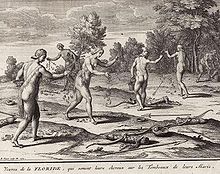
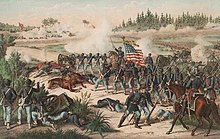
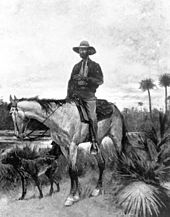
















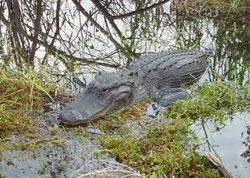




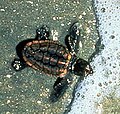

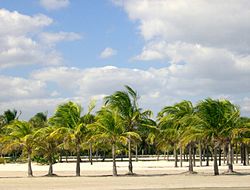





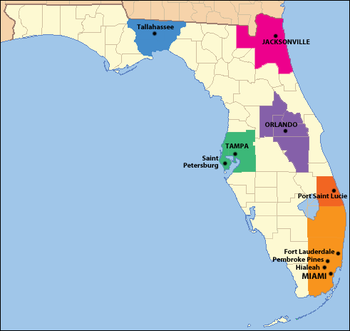




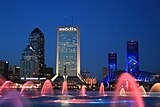

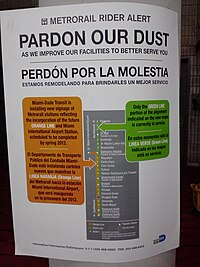






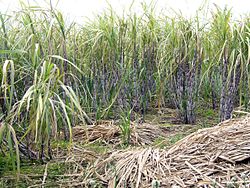

















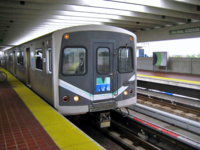
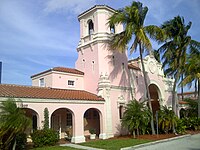
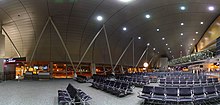





Nenhum comentário:
Postar um comentário